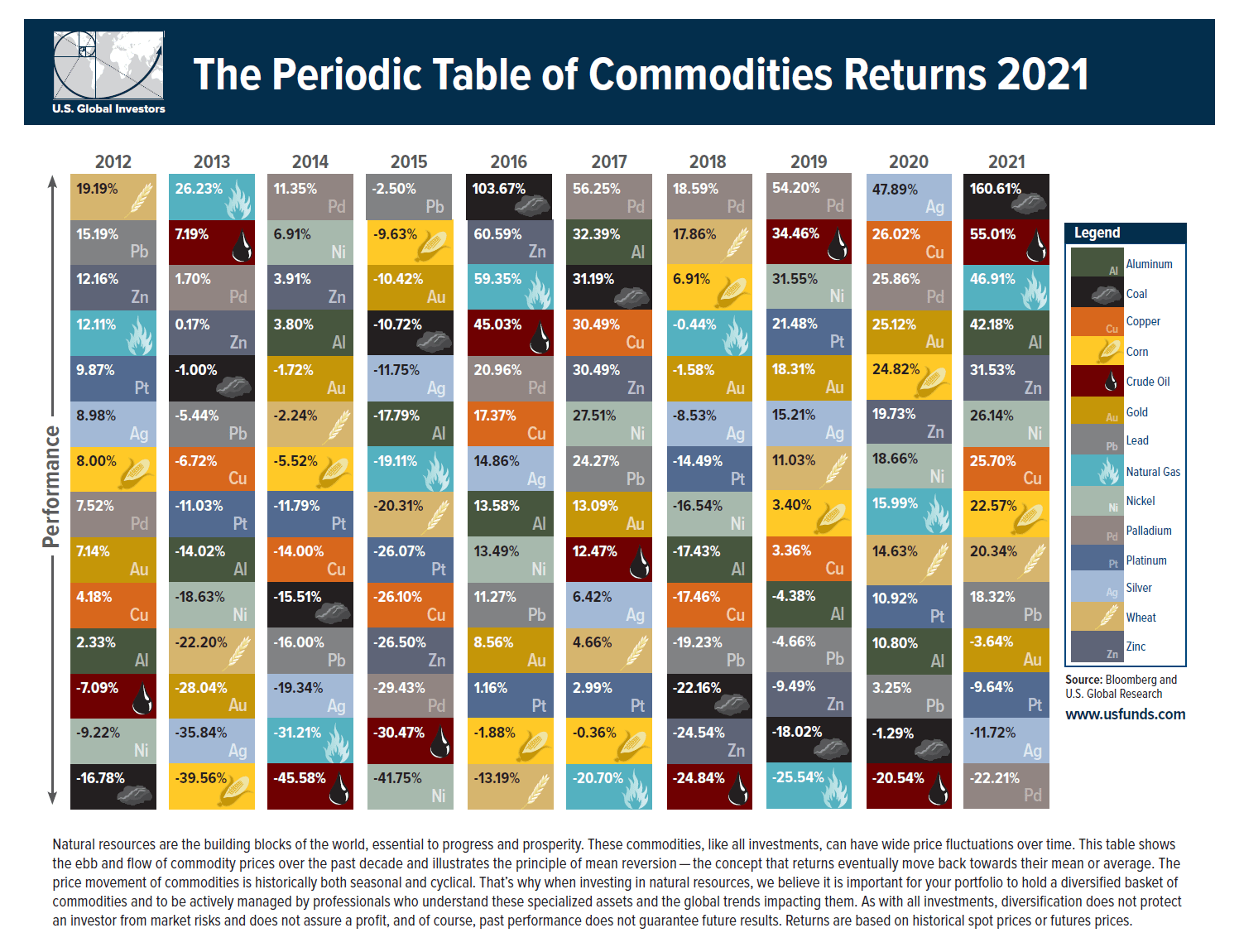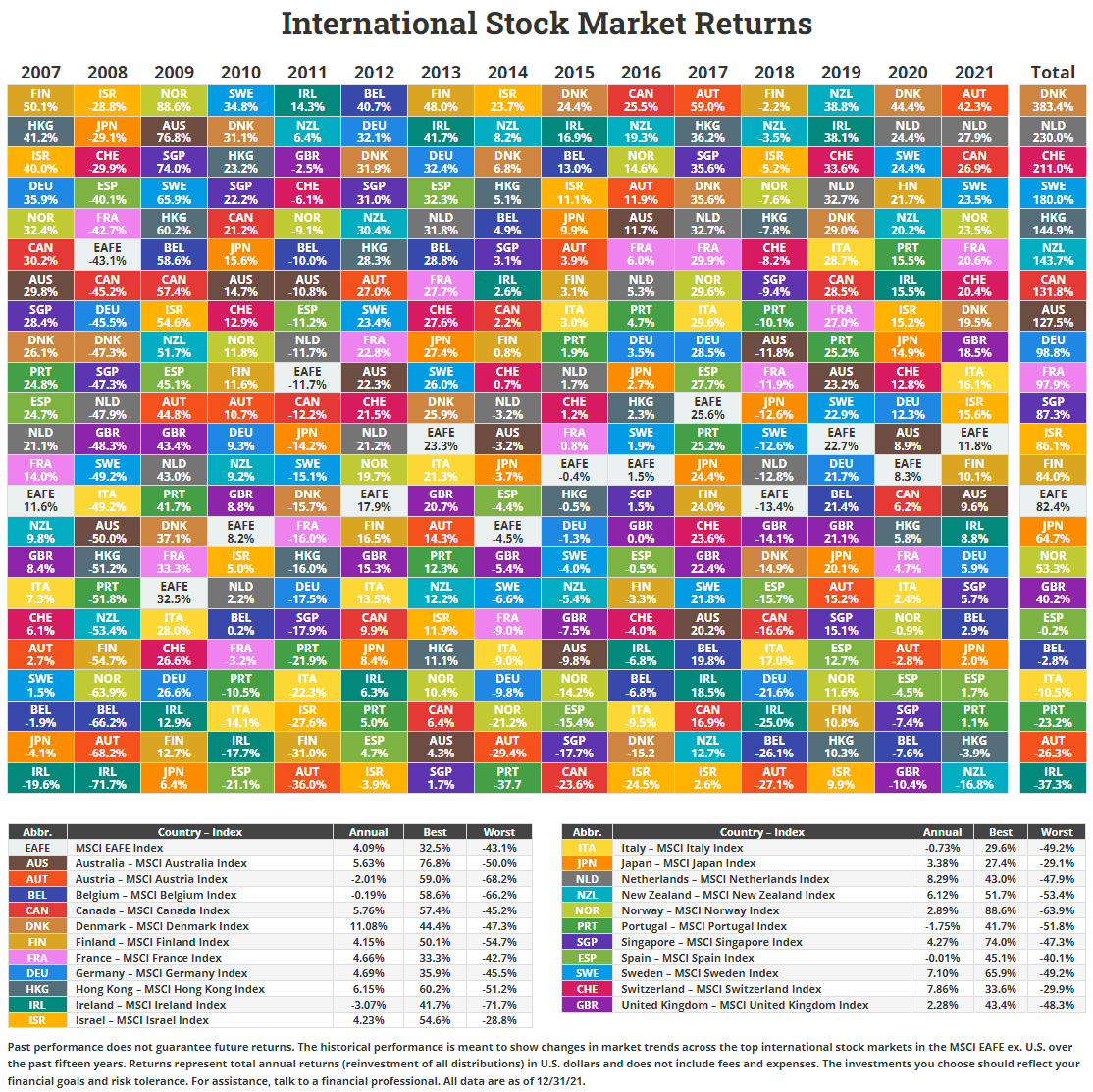Commodities had one of the best years last year in recent history. The dramatic recovery in crude oil prices led to crude ending the year with a 55% gain. Natural gas was up about 47%. The best performing commodity was coal with a return of over 160%. Despite the rising popularity of renewables coal is still the king in some countries including Germany. Gold ended the year with a loss of about 4%.
The following chart shows the annual returns of select commodities from 2012 to 2021:
Click to enlarge
Source: U.S. Global Investors
For an interactive version of the above chart go here.


